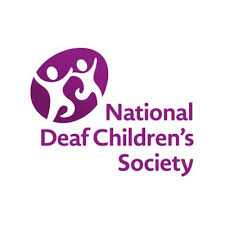Number, maths and deaf pupils – personal reflections
A feature of this website is the inclusion of personal experiences of the topic under consideration. This makes it possible to include different perspectives, including accounts from professionals and consumers, and different views on decisions that have been made.
We welcome these contributions at any time, and guidance for contributors is given in the overview of the project section.
We are also happy to include here links to signed contributions.
Index
- Teaching mathematics to deaf children. Terezinha Nunes, Emeritus Professor in the Department of Education, University of Oxford
- Thoughts on teaching maths to deaf pupils. Janice Silo. Retired, previously Head of Primary, Royal School for the Deaf, Derby
- Teaching maths in secondary school. Cathie Birch. A qualified Teacher of the Deaf and Numeracy lead at The Royal School for the Deaf, Derby
- The enjoyment of teaching maths Sarah Clarke. A qualified teacher teaching deaf learners, ranging from ages 3 to adult
Contents
Terezinha Nunes is an academic and researcher. Her paper describes the development of research projects which explored how deaf children tackled mathematical problems. In the following three papers, three Teachers of the Deaf, who are themselves deaf, describe their experiences of teaching maths to deaf pupils. The first, Janice Silo, chose to make her contribution as text, Cathie Birch and Sarah Clarke developed their contributions as a series of responses to questions put to them.
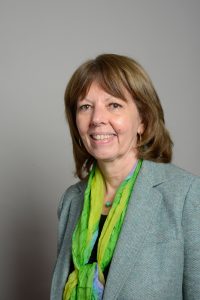
Teaching mathematics to deaf children
When Constanza Moreno walked into my office at the Institute of Education in London in 1993 and asked whether I would supervise her MSc project, I had no idea of what was about to happen in my life. Constanza was interested in doing a research project about deaf children and mathematics. She had always liked mathematics and told me that deaf children had great difficulty in learning mathematics in school. I told Constanza that I knew nothing about deaf children, but had some expertise on how children learn mathematics; maybe this could work out. However, I could not agree to work with her on this topic until I had some idea of what research questions could be of interest. I don’t like to work on something that I know just from books and articles: I like to have personal experience of topics that I research. Constanza suggested that she could video-tape some mathematics lessons at a school for the deaf; she had a friend who might be able to obtain permission for this and we could watch the videos together. She went away, and in her usual reliable manner, came back later with a week of mathematics lessons in a special school for the deaf on video. The school used BSL and English, but mostly English, so we were able to understand the lessons. Neither of us could sign. Most of the children were between 7 and 9 years old, as I recall.
We watched some lessons together, others independently. I was hooked into this new world, where I saw eager children, clearly intelligent, who could answer many questions about addition and subtraction facts, but didn’t seem to have a clue about how to solve problems that involved addition and subtraction. This struck a chord in my mind and my heart: I knew children in Brazil with knowledge of problem solving who could not do arithmetic, which is the opposite of what the children in the videos could do. The children I knew failed in mathematics tests in school but were very competent in solving problems in the street markets where I purchased fruit and vegetables. They were bright children who were, unfortunately, perceived by their teachers as not very clever because of what the teachers saw as impoverished social backgrounds. And here were the deaf children who struck me as bright and motivated, and I was told that they typically had relatively low attainment in mathematics. I wondered whether they had all kinds of untapped potential.
When I was a university student one of the professors with whom I worked told me: when you explain something and the other person doesn’t understand it, either you didn’t explain very well or the person has problems with understanding. She said she always started from the first of these two alternatives. So, I thought that maybe Constanza’s research could be about how to explain better the connection between arithmetic and problem solving to deaf children. I knew that many hearing children have similar problems and so this would not be particular to deaf children. Maybe we could talk to someone who was good at explaining the connection between arithmetic and problem solving to hearing children and try a similar approach with deaf children. I asked my friend Koeno Gravemeijer, a rising star in research on realistic mathematics education, if he had any suggestions of a school, we could visit that used realistic mathematics education with deaf children. He had actually worked with some Teachers of the Deaf in Utrecht and introduced us to the teachers in that school.
By the time we visited the school we had watched some more children and had some hypotheses about why realistic mathematics education could work well for helping deaf children connect their knowledge of arithmetic with problem solving. We wrote a proposal to the Nuffield Foundation (the project was called “Addressing the communication needs of deaf children in the classroom”) with the aim of learning more about deaf children’s mathematics. We received support that allowed us to visit the school in Utrecht and to run a study about the use of realistic mathematics education in schools for the deaf in London. This visit also inspired Constanza’s MSc dissertation, which investigated the effect of introducing the concepts of addition and subtraction by means of the bus story, designed by van den Brink, 1991. In this story, one child in the class is the bus driver and starts to go on the bus route with an empty bus, represented by a rope tied in a long loop. The bus stops at different stops and passengers (the other children) go in and come out of the bus. The children draw this story and start to use the mathematical signs + and – to represent what happened, and to use numbers to represent how many got on and how many got off the bus at each stop, and how many passengers were in the bus. Constanza’s dissertation showed that the deaf children who used the bus story for learning about addition and subtraction problem solving in school had better outcomes in a test of mathematics attainment at the end of the project than children who did not have this experience (Moreno, 1994).
During five years Constanza and I became progressively more involved with the deaf world. We learned to sign and passed BSL level 2 so that we felt relatively more confident when working with children who signed. Constanza was always ahead of me in learning to sign and collected much more data than I did. She noted that the deaf children used sign to help them add and subtract and video-recorded children signing and solving problems. We watched the videos of their signing over and over until we learned the logic of what we called “the signed algorithm”. As far as we could tell, the signed algorithm was invented by deaf children who signed: none of their teachers was aware of it. Constanza taught it to one teacher, who taught it to the children in her class. Constanza video-taped some children using the signed algorithm so we could understand it better as we watched even more videos. We described how it worked and how it could go wrong in two papers (Nunes & Moreno, 1997; 1998).
During this time, and with the support of the Nuffield Foundation, we put together a teaching package using realistic mathematics education ideas for Teachers of the Deaf to try out in their classrooms. The children were encouraged to use manipulatives and drawings, to show the numbers in the problems in the number line and to discuss whether the problems were direct or inverse. In an inverse problem, there is a transformation (for example, a girl got 3 sweets from her granny) and an end state (she now has 8 sweets), but the initial state is unknown; the solution is to think about what it must have been like before the transformation happened. The inverse relation between addition and subtraction and also the inverse relation between multiplication and division are challenging both for hearing and for deaf children. We knew of some ways to teach hearing children how to think about inverse problems and we used similar methods to teach the deaf children in this project. The ideas in the programme that we tested worked very well for addition, subtraction, multiplication and division. The lessons on fractions did not work well. At the end of the project, the children who had worked with the programme we had prepared had higher attainment in a mathematics test than those who had not done so (Nunes & Moreno, 2002). By this time, Constanza had carried out her own research and obtained her doctorate (Moreno, 2000). She went on to work with Prof Margaret Harris and then became a clinical psychologist. We lost personal contact but I recently I read a piece written by her, which I think is inspiring (http://www.raisingandeducatingdeafchildren.org/2018/07/18/psychologists-working-with-deaf-children-and-young-people/ last visited on 18/02/2019).
As I met more deaf children, they continued to impress me as a keen and motivated group, full of life and jokes. A new research team was formed when the RNID – now Action for Hearing Loss – and the Nuffield Foundation agreed to support further research on teaching literacy and mathematics to deaf children. Diana Burman, who had been a teacher of deaf children, Ursula Pretzlik, Deborah Evans, Daniel Bell, and Peter Bryant became the new collaborators in this research. Peter and I had found much support for the Piagetian hypothesis that children’s key understandings in mathematics come from their schemas of action (Nunes & Bryant, 1996). From this research with hearing children, we conjectured that young deaf children did not need to be slower in developing early mathematical concepts, if they were taught in ways that were appropriate for them.
Teaching children about how to use schemas of action in problem solving can be done by imitation alongside language, oral or signed. Whereas many people think of imitation as “thoughtless parroting”, research on imitation shows that even toddlers are not just parroting when they imitate actions: they imitate only actions that are successful, and do not imitate those that are not successful. We tested whether young deaf children were able to reproduce numerical displays by imitation and found that they were as good as hearing children at reproducing displays presented to them sequentially (i.e. one object at a time) and actually better than hearing children at reproducing displays presented simultaneously (i.e. all the objects shown at the same time; Zarfaty, Nunes & Bryant, 2004). The work we had done in the first 10 years of research with deaf children about mathematics learning was summarised at this time in a book (Nunes, 2004).
This was not the end of our research with deaf children learning mathematics. Each study gave us new ideas about how to design teaching that was in line with deaf children’s strengths and we tested several aspects of these ideas in separate and more focused studies. Two other researchers joined our team briefly, Laura Montgomery and Darcy Hallett, and we investigated deaf children’s learning about additive composition of number, the inverse relation between addition and subtraction, and multiplicative reasoning (Nunes, Bryant, Burman, Bell, Evans & Hallett 2008; Nunes, Bryant, Burman, Bell, Evans, Hallett & Montgomery 2008; Nunes, Bryant, Evans, Bell, & Hallett 2013; Nunes, Evans, Barros & Burman 2013). All the intervention studies we did at this time were brief interventions from the perspective of researchers and teachers: typically, we worked with the children on four or five days. On the first and last days we assessed them in the normal way assessments are given: the children had no demonstration from us. In the days in-between, we worked with them doing dynamic assessments, which are ways of assessing children that allow the teacher to demonstrate what the teacher is asking so that it is clearer to the children what they need to do. The word demonstration means that the teacher actually does something that the child can imitate; the demonstration is accompanied by language, oral or signed, that complements the action.
For example, in our theory about schemas of action the origin of multiplicative reasoning is in the schema of one-to-many correspondence. During the teaching sessions, if the children did not use this schema of action, we demonstrated it partially and encouraged the child to complete the solution of the problem by employing the one-to-many correspondence schema. To illustrate: one of the multiplication problems was: 3 lorries are bringing tables to the school; each lorry is carrying 4 tables; how many tables are they bringing to school? The children were given cut-out figures of lorries and some cubes, which they could use to represent the tables. They were encouraged to show what the problem had indicated. If they did not establish the 1-to-4 correspondence between lorries and tables, we demonstrated it, by pairing the cut-out lorry with 4 cubes and encouraged them to finish the demonstration. If the child made the correspondence for one lorry and stopped, we suggested that they did the same for the other lorries too. The researchers worked with the children so that they established the correspondences indicated in each problem. The children learned to use this action schema at first by imitation, and they could later use it in problems with different contents and different structures: for example, if they knew how many children were going to the zoo and how many could go in one van, they could then figure out how many vans were required to carry all the children.
In each study, in the course of about two to three hours of teaching, the deaf children made significant progress from pre- to post-test, and this progress was larger than the progress made by a comparable group of deaf children who had not learned about the same concept between the pre- and the post-test. Most of the time, the comparison group had learned about something of educational value, but not about the concept that we were investigating in the study.
As I write about the 20 years or so during which our team worked with deaf children, I realise that we always thought of deaf and hard of hearing children simply as children; learning mathematics involves mastering the same concepts, irrespective of whether the children can hear well or not. In this sense, mathematics learning is rather different from literacy learning. Learning to read and write in English is a language based activity: it involves learning how the English language is represented in print. Learning mathematics involves communication, but the systems of signs of mathematics are not based on specific languages. In English we count “one, two, three…” and in Portuguese we count “um, dois, três …” but the written number system that we use in England and in Brazil is 1, 2, 3 …. It was invented by speakers of other languages (it is known as the Hindu-Arabic base ten system); it is not an attempt to represent the counting words in a language. The mathematical concepts of arithmetic operations are also the same, irrespective of the language we speak: some languages may have different words for the same action (put together, join, add) and others may not have as many words, but in the end addition is not just about putting things together, because it must also be understood as the inverse of subtraction. A mature concept of operations is the result of solving many and different problems that illustrate the concept: it is not the result of a good translation from a linguistic term into the mathematical sign +. This reflection today takes me back to the title of the first project that we carried out about deaf children and mathematics: “addressing the communication needs of deaf children in the mathematics classroom”. I suspect that some readers will disagree with this, and think that there is something specific about “deaf cognition”. However, after we identified their preferences in information processing and attempted to teach to their strengths, we found that interventions that worked well for hearing children also worked well for deaf children.
References
Brink J V D 1991 Realistic arithmetic education for young children. In: Streefland L (ed.) Realistic Mathematics Education in Primary School. Utrecht: Freudenthal Institute, Utrecht University.
Moreno C (2000) Predictors of mathematics attainment in hearing impaired children. A thesis submitted in fulfilment of the requirements of the DPhil, Department of Child Development and Primary Education, Institute of Education, University of London.
Moreno C 1994 The Implementation of a Realistic Mathematics Education programme in a special school for the deaf. Masters dissertation presented at the Department of Child Development and Primary Education, Institute of Education, University of London.
Nunes T & Bryant P E (1996). Children doing mathematics. Oxford: Blackwell.
Nunes T & Moreno C (1997). Solving word problems with different ways of representing the task. Equals. Mathematics and special educational needs, 3 (2), 15-17.
Nunes T & Moreno C (1998). The signed algorithm and its bugs. Educational Studies in Mathematics, 35, 85-92.
Nunes T (2004) Teaching Mathematics to Deaf Children. London: Whurr/Wiley-Blackwell.
Nunes T, Bryant P, Burman D, Bell D, Evans D & Hallett D (2008) Deaf Children’s Informal Knowledge of Multiplicative Reasoning. Journal of Deaf Studies and Deaf Education, 14, 260-277.
Nunes T, Bryant P, Burman D, Bell D, Evans D, Hallett D & Montgomery L (2008) Deaf Children’s Understanding of Inverse Relations. In M. Marschark & P. C. Hauser (Ed.), Cognitive Underpinnings of Learning by Deaf and Hard-of-Hearing Students (pp. 201-225). Oxford: Oxford University Press.
Nunes T, Bryant P, Evans D, Bell D, & Hallett D (2013) Promovendo a compreensão da composição aditiva em crianças surdas (Promoting deaf children’s understanding of additive composition). Cadernos Cedes (Campinas, Brazil), 33, 319-332.
Nunes T, Evans D, Barros R, & Burman D (2013) Promovendo o Sucesso das Crianças Surdas em Matemática: Uma Intervenção Precoce (Promoting deaf children’s success in mathematics learning: An early intervention). Cuadernos de Investigación y Formación en Educación Matemática (San Jose, Costa Rica), 11, 263-275.
Zarfaty Y, Nunes T & Bryant P (2004) The Performance of Young Deaf Children in Spatial and Temporal Number Tasks. Journal of Deaf Studies and Deaf Education, 9, 315-326.
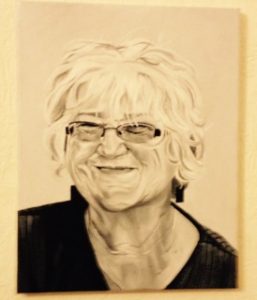
I think I avoided teaching maths to pupils past a particular age. I understood arithmetic because it was straightforward but teachers had given up teaching me more complex maths when I was at school.
The most rewarding times in teaching maths was the teaching of the language of maths. I must emphasise though that BSL is NOT a tool to teach any particular subject, it is a complex language in its own right.
I was interested in discussing problems, but also in signing using SSE (Signs Supported English – Deaf Way, note some deaf people use SSE in a different way from hearing people). It is not that BSL is not adequate but as a young teacher I thought I might as well use the exact sentences used in maths. We used loads of games.
I would also transfer the language of maths into other subjects too – like in history I would ask how many victories did so-and-so win etc. I was basically an English, RE and history teacher but did incorporate mathematical language to reinforce their learning, it was a satisfying experience. Some of my sentences were weird but often it was my enthusiasm getting in the way.
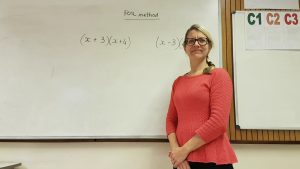
When you were at school did you like maths? What parts were easiest and what were difficult?
I have always loved maths from when I started Primary school. I loved maths because it is simply right or wrong. I had fondest memories of doing a short division test in primary! My love of maths carried on through secondary as well. I really enjoyed algebra in secondary particularly with solving equations and substitution. I remembered doing trigonometry using the log book, but glad that we can use a calculator now.
When I went to City of London polytechnic, I planned to do a maths degree but I struggled with some of the maths, but I then discovered Statistics (I didn’t do Statistics when I was at school), fell in love with the subject and ended up majoring in Statistics for my degree.
Did you struggle with anything in particular?
I particularly struggled with the language involving percentages. And other word problem questions that involved multi-step calculations.
Do you like teaching maths?
I love teaching maths; I must do if I have been doing it for 23 years! I love it when the student gets it, like when a light bulb switches on.
Are the best pupils generally good at everything? Do they generally have good communication skills? Does it depend whether their communication is BSL or English?
The best pupils are those who give their best and who persevere regardless of their abilities. Naturally it is easier to teach pupils with higher abilities as you only need to guide them. For those who struggle, I adapt and give smaller steps and use more visual materials to allow them to access the maths.
Do deaf pupils have different problems from hearing children? Are there any particular areas they find easy or difficult?
Language is the big issue – time, percentages, word problems for deaf pupils. Also, the pace of the lesson is slower due to deaf students watching the teacher for explanation etc before they can start the work, whereas for hearing students they can listen to the teacher and at the same time start doing the work.
Do some deaf pupils think of maths as their favourite subject?
Yes, some deaf pupils love maths.
Are there any special concessions for deaf pupils in GCSE etc?
They have 25% extra time and access to sign language if they struggle to understand the written English.
Have you ever had any surprises teaching maths to deaf pupils, something they have understood more quickly than you expected, or something they could not understand?
The biggest surprise for me is Algebra. They seem to understand it really well. I have to say though over the years I have tried different ways to introduce algebra and I use polo sweets to help to understand the concept of an unknown number!
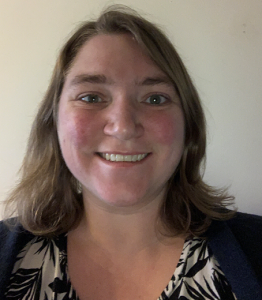
When you were at school did you like maths? What parts were easiest and what were difficult?
I adored maths lessons in both mainstream primary school and deaf secondary school. Having such good teachers really helped me to understand the more complex topics.
At primary school, I found it frustrating when I got ahead in maths and I was asked to wait until the class caught up with me as I just wanted to continue learning maths. I enjoyed working out harder questions. My mother bought some maths exercise books for me to continue practising at home. I believe this is what kept me going to ensure that I was at least equal to, if not above, my hearing peers at primary school. I did not want my deafness to hold me back.
Did you struggle with anything in particular?
Initially I found fractions difficult at primary school but I got the hang of it. It was to do with adding, subtracting and multiplying and dividing, and to find the differences in swapping the numerator and denominator numbers, making sure that I was doing the right working out to get the correct answer.
Do you like teaching maths?
Over the years working with deaf learners, I enjoy teaching maths. I usually teach maths to a lower level group, at entry level students, and in one class, managed to move all my students up a level, in a way that previous hearing tutors could not. This enabled me to be confident and be able to teach at GCSE level in which a few students who were predicted a grade U eventually got a grade E.
Another student was stuck on entry 2 for about a year. When I started teaching this deaf student, I was told that I needed all the luck in the world to enable him to pass entry 2. As it turned out, I just needed this student to go back to basics briefly to be sure that he had understood the basic mathematical concepts. Once he had grasped this, with explanations as to why they were important – such as two halves make a whole, in the same way as two half an hours make one hour, or 4 quarters make a whole, again, using the same principle to explain that 4 quarters of an hour makes one hour.
Within the second term, he passed with no additional support, and my colleagues were amazed! Unfortunately, the exam paper was misplaced and he had to retake it. Thankfully he passed this also!
Are the best pupils generally good at everything?
Not necessarily. There are some deaf learners who are better at maths than English, and some who are better at English or other subjects than maths. I believe this is partly due to their background, whether their parents help them at home, whether English is their home language, whether they are interested in the subject or not, and particularly, whether they are motivated to learn.
Many of the students I have taught over the years, are either BSL users or come from another part of the world, therefore English or BSL is not their first language. I have even encountered a deaf learner who did not even have language, but relied on gestures and pictures. This challenged me to adapt my teaching so that she was included and was able to make progress. With this in mind, I ensured that I embedded teaching English vocabulary along with pictures to encourage her to have a basic grasp of what she needed to know.
I often take keywords and encourage learners to practise reading words, such as “more than” “the difference between”, “shared between” etc.
Do deaf pupils have different problems from hearing children? Are there any particular areas they find easy or difficult?
The main difficulty lies in how much initial language and understanding that deaf pupils have. For teaching maths, I am passionate about increasing their skills and knowledge in mathematical concepts.
Are there any special concessions for deaf pupils in GCSE etc?
The main one is that deaf learners have extra time in the exams; however, I do know of one place where the deaf pupil requested a BSL interpreter but was not allowed extra time. It was one thing or the other.
What is your approach to teaching maths?
I have had a number of pupils tell me that I am their favourite teacher because I am patient and explain maths in a way that they understand before moving on to the next topic. With this in mind, they say that maths is their favourite subject. However, it is my belief that they must grasp the fundamentals before trying complex questions.


